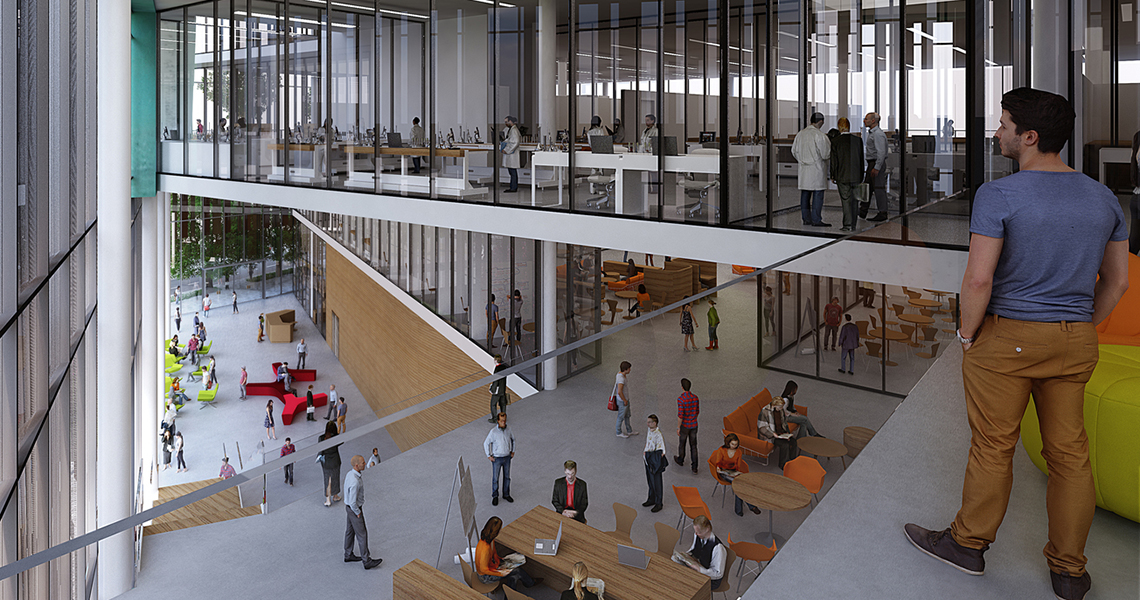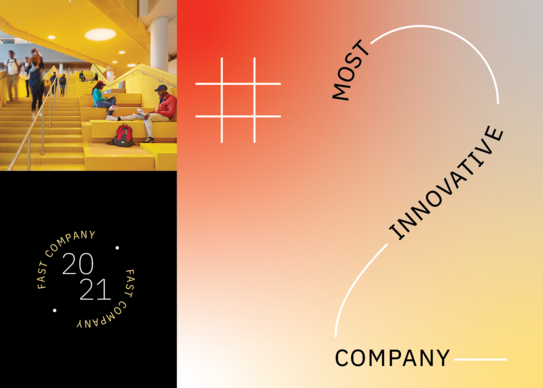While the U.S. Bureau of Labor Statistics’ 2019-29 employment projections show occupations in STEM fields outgrowing all others, Patricia and Charles note many colleges and universities face challenges keeping pace—specifically with enrollment, graduation rates and the underrepresentation of BIPOC students. The difficulty of staying in sync with the changing needs of the workforce is also an ever-present challenge.
“We’ve found that part of the problem is many conversations start and end with the technical requirements of STEM education (i.e., what it takes to teach students the skills they need to be successful),” they said in the article. “What isn’t often considered is how to create and nourish a STEM culture focused on the whole student and the experiences they need to thrive both academically and socially.”
Based on their experience working with colleges and universities across the country, the article introduces five primary ways design can help institutions move beyond STEM programs to create deep-rooted STEM cultures. Below is one of the strategies presented in the article. Read the full story here.
Rethink the campus “heart.”
 Purdue University Northwest’s Nils K. Nelson Bioscience Innovation Building places lounge spaces and collaboration zones adjacent to cross-disciplinary skills labs to encourage students to get comfortable and linger.
Purdue University Northwest’s Nils K. Nelson Bioscience Innovation Building places lounge spaces and collaboration zones adjacent to cross-disciplinary skills labs to encourage students to get comfortable and linger.
While we know STEM programs are growing at significantly higher rates than other programs, traditional STEM academic buildings were often designed to only accommodate instruction and research. This leads to students attending class and then heading to other buildings to socialize, study, collaborate and recharge. One of the first steps institutions can take to nourish stronger STEM cultures is giving students a reason to stay and linger after class, build relationships with their cohort, socialize with professors and researchers, and view STEM buildings as a destination as opposed to just a brief stop in their day.
 The University of Utah’s Lassonde Studios is filled with “sticky space” to encourage students to linger and socialize with others, from maker spaces and prototyping rooms to communal tables, a cafe, gaming areas and more.
The University of Utah’s Lassonde Studios is filled with “sticky space” to encourage students to linger and socialize with others, from maker spaces and prototyping rooms to communal tables, a cafe, gaming areas and more.
How’s this achieved? Start by carving out space to include the comforts and features students are drawn to elsewhere on campus. We often refer to these elements as “sticky spaces” because including them in an academic building can prevent students from simply making a beeline to the exit after class. Features might include a café, food options, collaboration zones, flexible meeting rooms, exhibits or lounge areas where academic life intermixes with the social aspects of student life. These spaces can also be more focused on inclusion, such as including lactation/nursing rooms and gender-inclusive bathrooms so everyone feels at home. This mashup of social and academic space can make STEM buildings a magnet for much more than classroom or lab-based learning.




